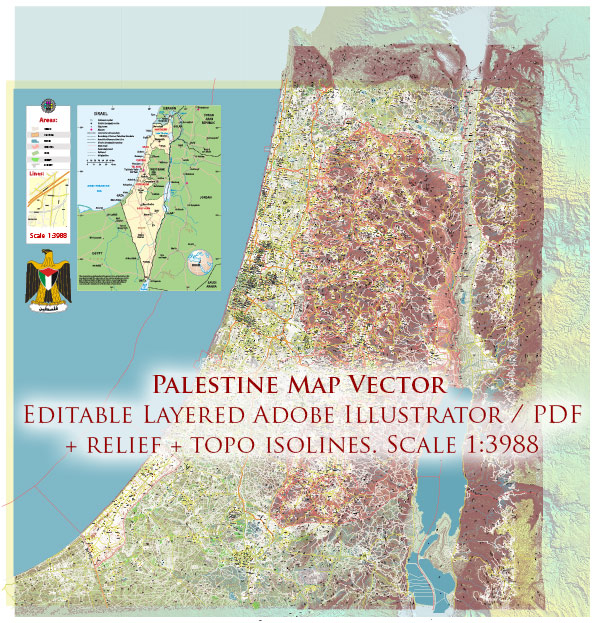The history of Palestine is complex and deeply rooted in the Middle East, characterized by centuries of cultural, religious, and political significance. The term “Palestine” has been used to refer to the geographic region located in Western Asia, between the Mediterranean Sea and the Jordan River. This region is also known as the Holy Land due to its significance to various religious groups, primarily Judaism, Christianity, and Islam. Here’s a brief overview of the history of Palestine:
- Ancient History:
- Palestine has a rich history dating back thousands of years. It was inhabited by various indigenous peoples, including Canaanites, Philistines, and Israelites.
- The Israelites established the Kingdom of Israel and later the Kingdom of Judah in the region, with Jerusalem as its capital.
- In 586 BCE, the Babylonians conquered Jerusalem, destroyed the First Temple, and exiled the Jewish population. This event is known as the Babylonian Captivity.
- Roman and Byzantine Period:
- The Romans conquered the region in 63 BCE and renamed it Judea. In 70 CE, they destroyed the Second Temple in Jerusalem.
- The region was subsequently ruled by the Byzantine Empire.
- Islamic Conquests:
- In the 7th century, Arab Muslim armies conquered Palestine, bringing Islam to the region.
- Under Islamic rule, Jerusalem became a significant religious site for Muslims and was home to the Al-Aqsa Mosque and the Dome of the Rock.
- Crusader Period:
- In the 11th century, Christian Crusaders captured Jerusalem and established the Kingdom of Jerusalem.
- Ottoman Empire:
- The Ottoman Empire ruled over Palestine from the 16th century until the early 20th century.
- British Mandate:
- After World War I, the League of Nations granted Britain a mandate to govern Palestine. During this time, Jewish immigration to the region increased.
- Partition and the State of Israel:
- In 1947, the United Nations approved a partition plan that recommended the division of Palestine into Jewish and Arab states. The plan was accepted by the Jewish leadership but rejected by Arab nations.
- In 1948, Israel declared its independence, leading to the First Arab-Israeli War. This resulted in Israel’s establishment and the displacement of a significant number of Palestinian Arabs.
- Israeli-Arab Conflicts:
- Several wars and conflicts have since occurred between Israel and its Arab neighbors, resulting in shifting borders and the continued Israeli-Palestinian conflict.
- The West Bank and Gaza Strip came under Israeli control in 1967 during the Six-Day War.
- Palestinian Nationalism:
- The Palestinian Liberation Organization (PLO) was established in the 1960s and led efforts for Palestinian self-determination.
- Oslo Accords:
- In the 1990s, the Oslo Accords initiated a peace process between Israel and the Palestinians, with the goal of achieving a two-state solution. However, a final resolution has remained elusive.
The history of Palestine is marked by a complex web of historical, religious, and political factors, and the Israeli-Palestinian conflict continues to shape the region’s dynamics, with multiple attempts at peace and numerous challenges along the way. The situation remains a source of tension and international concern.


 Author: Kirill Shrayber, Ph.D.
Author: Kirill Shrayber, Ph.D.